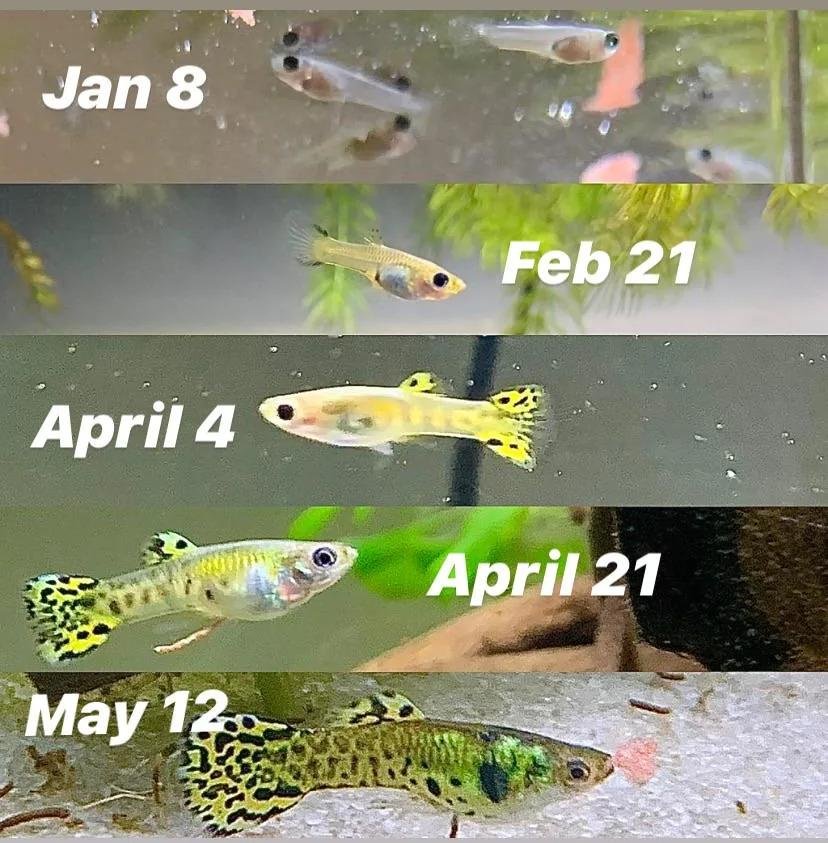Guppy Fry Growth Stages W/ Pictures- The Complete Guide
This is the complete guppy fry growth stages guide, with pictures.
You’re probably having your first female give birth, or maybe you are planning on breeding your guppies. Either way, this guide is designed for the ultimate beginner and will give you all the information you need.
Let’s dive in.
Guppy Fry Growth Chart
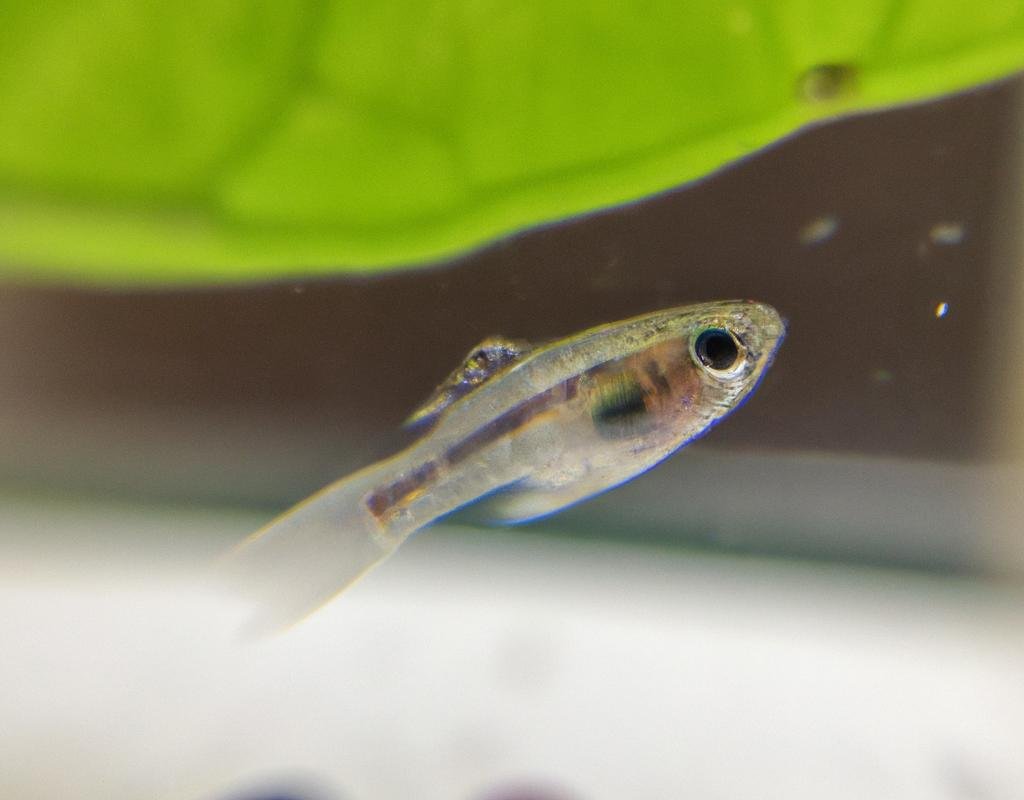
New Born Fry
Guppy Fry Growth Stage: 0-4 weeks
The first guppy grow stage happens at birth, when the fry are about a quarter of an inch long- which means they are very small. Since your goal is to keep them, you’d want to remove them from the adult tank and place them in a tank of their own.
They will probably not eat in the first day or two. This is normal as they feed on the yolk sack they were born in.
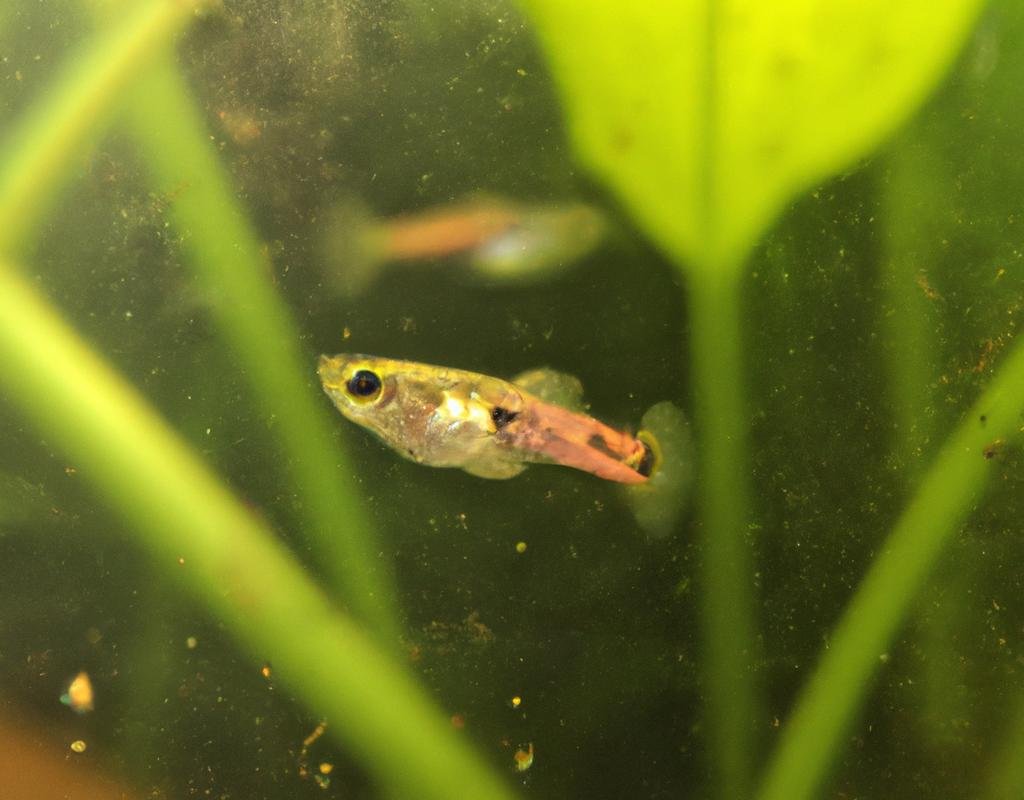
Juvenile Stage
Guppy Fry Growth Stage: 4-8 weeks
As the fry continue to grow, they enter the juvenile stage. It takes about 4 weeks before you’ll be able to sex your guppy and tell whether it’s male or female.
During this phase, which will end by the time the fries two months old, the guppies undergo significant changes. They develop more defined body shapes, their fins begin to take shape, and their colors become more apparent.
Juvenile guppies are still delicate and should be provided with a balanced diet consisting of high-quality flake food, frozen or live foods, and occasional treats like brine shrimp or daphnia.
Continue to crush their food if you’re using commercial fish food is there mouths are still small.
Regular water changes and maintenance of proper water parameters are essential for their growth and well-being.
At What Age Do Guppies Start Breeding?
Guppies start breeding at around 8 weeks old. Unless you want your new fry to pump out more fry, you’ll need to separate them at this point.
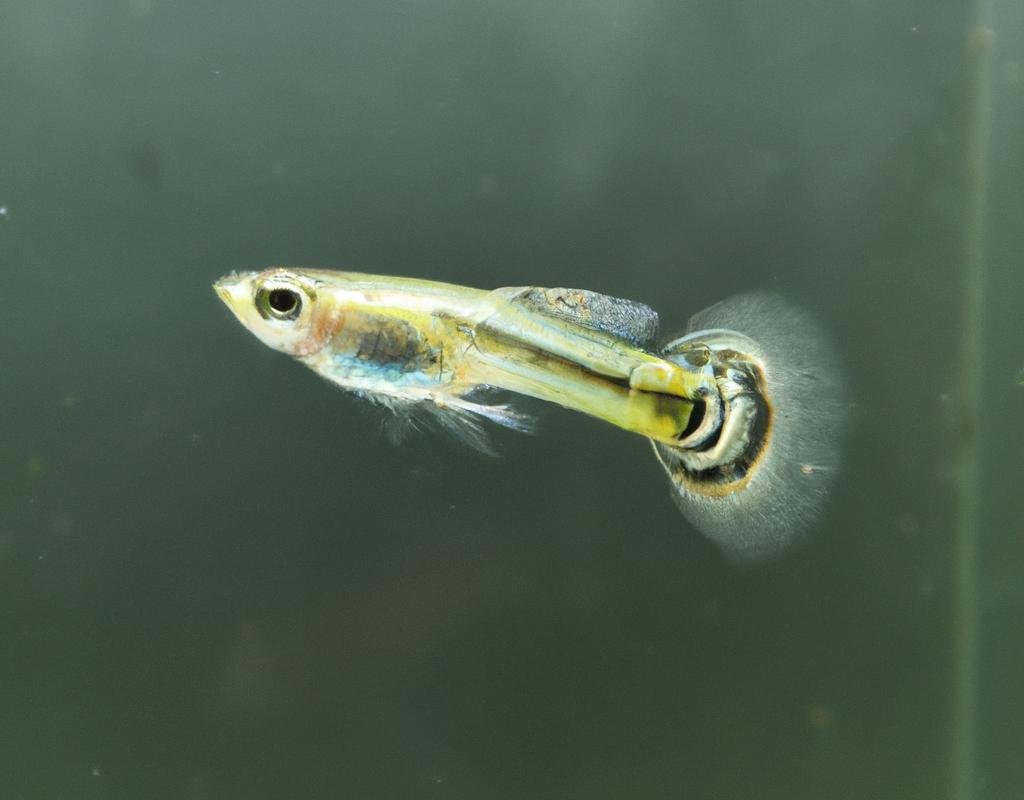
Sub-Adult Stage
Guppy Fry Growth Stage: 8-26 weeks (2-6 months)
The sub-adult stage marks the transition from juveniles to adult guppies. They will continue to grow and develop their colors and markings with every week that goes by.
Breeding: They become sexually mature during this stage, and males may start displaying courtship behaviors towards females.
If you’re going all in on breeding guppies this is the part where you want to separate the males from the females. This will allow the males to grow bigger and with brighter colors as they’re focusing only on feeding.
This is where you can start feeding them differently.
Cut their fat content and switch them to a Diet richer in protein. Brine shrimp should still be their main source of food but you can also introduce blanche spinach or blanched kale as well.
and if you want to supercharge their vibrant colors offer them Spirulina and plankton pallets In addition to their regular food.
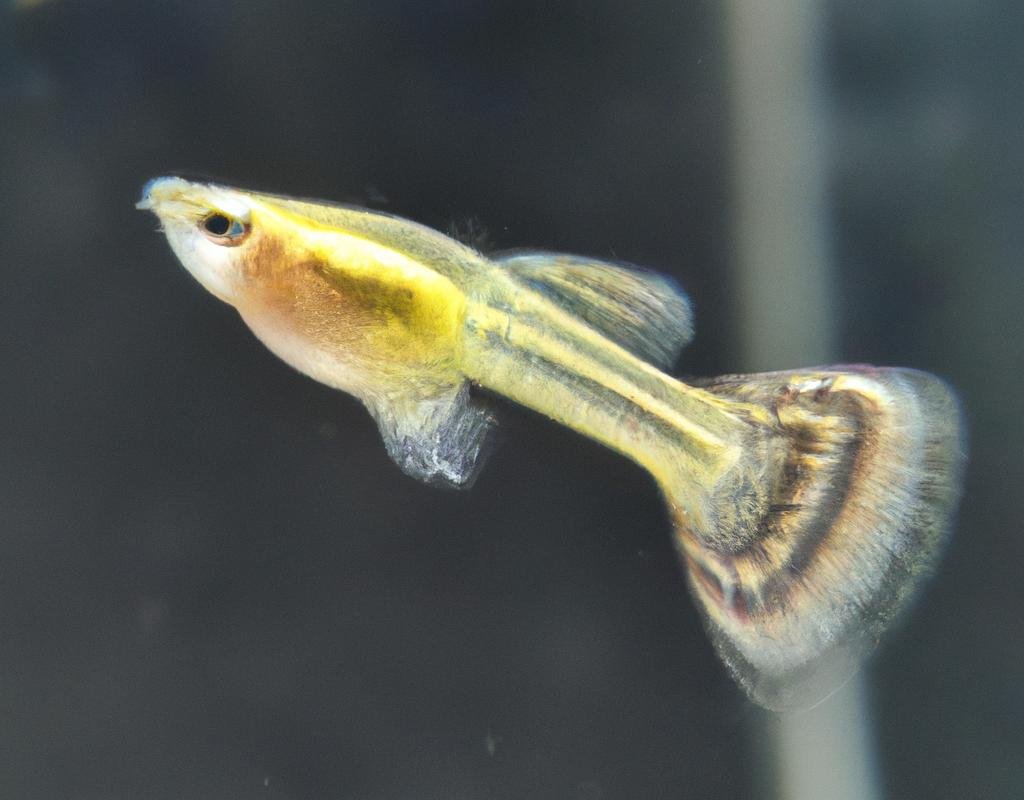
Adult Stage
Guppy Fry Growth Stage: 6 Month+
By the time the guppies are six months old, they are considered full grown adults.
Males display their vibrant colors and beautiful tails. On the other hand, adult females have a rounder body shape and more subdued colors.
Continue to provide adult guppies with a well-maintained aquarium, suitable tankmates, and a balanced diet consisting of high-quality flake or pellet food, supplemented with occasional live or frozen treats.
Maintain stable water conditions, including proper temperature, pH, and regular water changes, to ensure their long-term health and vitality.
Guppy Behavior Before Giving Birth
Now that we have covered the guppy fry growth stages, let’s look at the signs leading up to it. For reference, you can read our guide on how to tell your guppy is pregnant.
Guppy behavior before giving birth
In the days and weeks leading up to giving birth, guppies will exhibit a number of behavioral changes. These changes can include:
- Increased appetite: Guppies need to eat more food in the weeks leading up to birth to support the developing fry. You may notice your guppies eating more frequently and/or eating larger amounts of food.
- Gravid spot: The gravid spot is a dark spot that develops on the female guppy’s abdomen as she gets closer to giving birth. The gravid spot is actually the developing fry, and it will become larger and darker as the fry grow.
- Restlessness: Guppies may become more restless in the days leading up to birth. They may swim more erratically or hide more often.
- Searching behavior: Guppies will often search for a suitable place to give birth in the days leading up to birth. They may look for dense plants or other hiding places.
How to care for guppies before giving birth
To help your guppies through the birthing process, you can do the following:
- Provide a nutritious diet: Make sure your guppies are getting a good quality diet that is high in protein. You may also want to supplement their diet with live food, such as brine shrimp or daphnia.
- Maintain clean water: Clean water is important for all fish, but it is especially important for pregnant guppies. Make sure you are performing regular water changes and testing your water quality regularly.
- Provide a hiding place: Guppies need a place to hide to feel safe, especially when they are pregnant. You can provide a hiding place by adding dense plants or other decorations to your aquarium.
If you plan on breeding guppies purposely, I’d recommend you read our guide on how to breed guppies.
Now that you have that under your belt, let’s recap:
0-4 weeks: the first stage, the fry will be very dull.
1-2 months: physical changes start to take place, they will look more like a guppy.
2-6 months: they will be able to start reproducing at this point and continue to develop their colors.
6+ months: adults
And lastly- a favor:
Help me build better guides by letting me know in the comment- what led you to read this guide? Are you actively breeding guppies or are you planning on it?
Thank you in advance!

